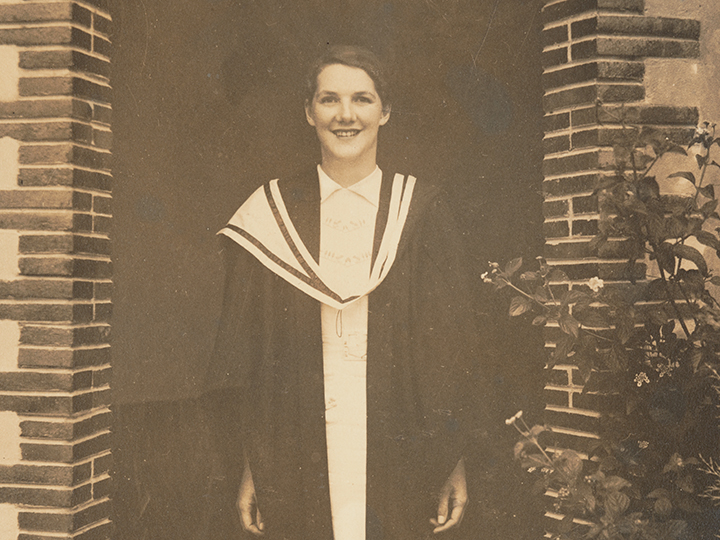In 1817 George Allen became the first person to begin legal training in Australia.
It would be another 80 years before a woman would receive the same opportunity.
Grata Flos Matilda Greig was that trailblazer when she entered the faculty of law at the University of Melbourne in 1897. At the time, women did not share the same rights as men to practise law in Australia. That milestone occurred in 1903 when the Women’s Disabilities Removal Bill (also known as the Flos Greig Enabling Bill) was passed in the Victorian Legislative Assembly, six years after Greig entered university.
Despite the pioneering efforts of women such as Greig and Ada Evans (who started her studies after Greig but became Australia’s first female law graduate), it was not until men left for the Second World War that women were given professional responsibilities and opportunities, and the number of women enrolling to study law began to increase.

Airlie Smith was the first female lawyer to join any of the founding firms of Allens.
Among those enrolments was Airlie Smith, an exceptional scholar who caused quite a stir when, in 1940, she became the first woman awarded the coveted Supreme Court Prize and EJB Nunn Scholarship for the top law student in Victoria. Smith supported herself throughout her studies by working in shops. She enjoyed the physical exercise involved in retail sales work and described it as a welcome respite from the rigours of study.
On graduating in 1940, Smith accepted a position as an articled clerk with Hedderwick Fookes & Alston – the first female lawyer to join any of the founding firms of Allens. In 1941 Smith also became the first female president of the Law Students’ Society of Victoria – it would be another 38 years before a woman held this position again. Smith also edited the Law Students' Society’s journal and tutored in jurisprudence in place of a professor who was on war service.
Arthur Robinson & Co employed its first female articled clerk, Julie Hunt, in 1947. North of the Murray River things were slower. Frances Cleary joined Feez Ruthning & Co in 1961 and Anne Hogan became the first female articled clerk at Allen Allen & Hemsley in 1963.
By the 1960s women represented 10% of Australian law graduates and, by 1987, men and women were attending law school in equal numbers. However, these numbers did not translate to equal participation in the profession. Progress in women achieving greater representation at senior ranks has been especially slow. In 1985 Allen Allen & Hemsley appointed its first female partner, Judy Mutton. In 1988 Louise Jenkins was the first woman to be appointed a partner at Arthur Robinson & Hedderwicks. ‘Nobody ever thought a girl would want to become a partner because it just wasn’t the sort of thing girls did apparently’, Jenkins says. She, along with Mutton and Marian Gibney, the first female partner at Feez Ruthning, helped to change those assumptions.
Today, the firm has strong female representation at all levels and continues to address the challenges long faced by women in the profession. In 2016 Fiona Crosbie was appointed the firm’s first female chair, and currently 37% of Allens’ partners are women.
